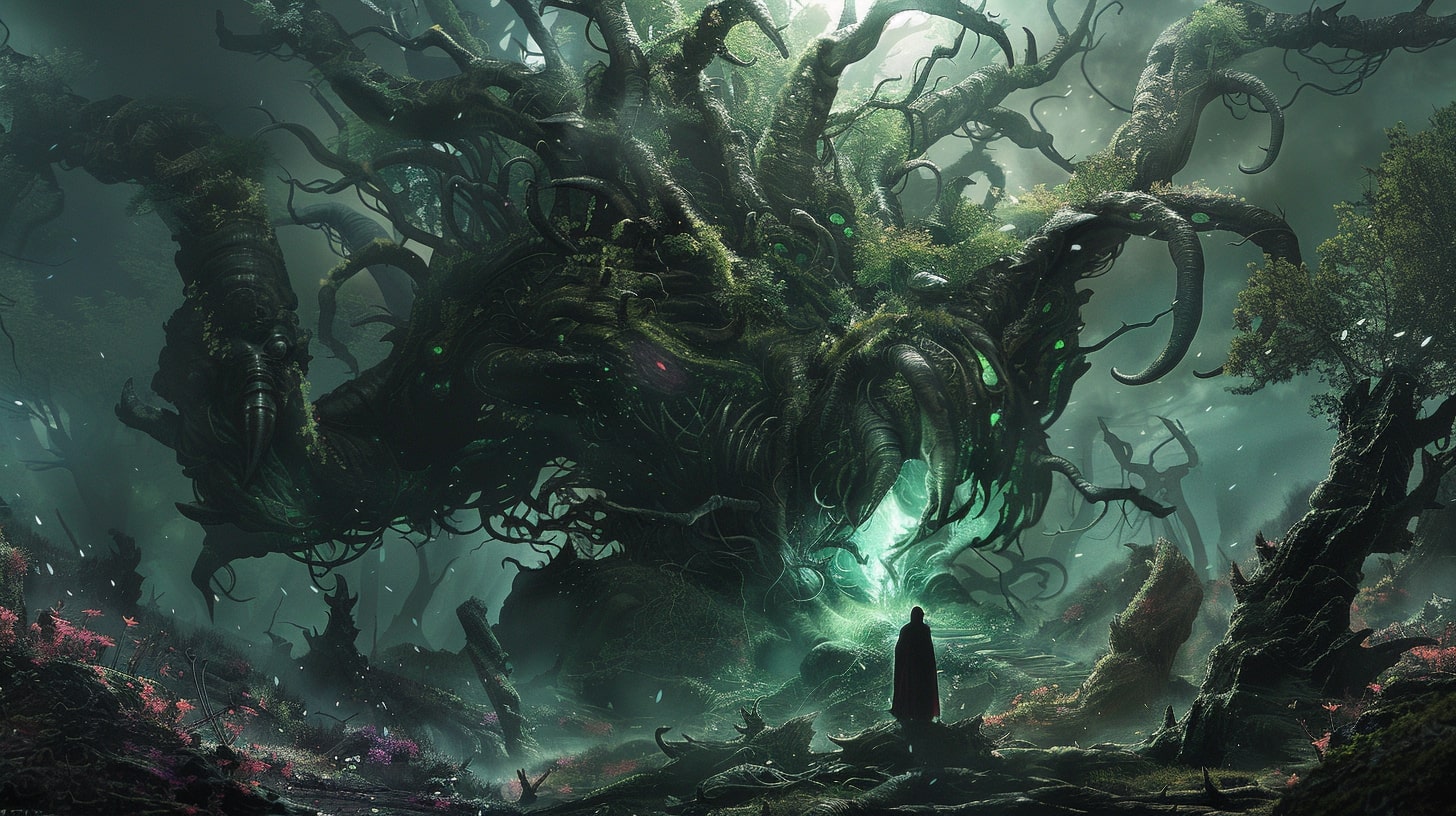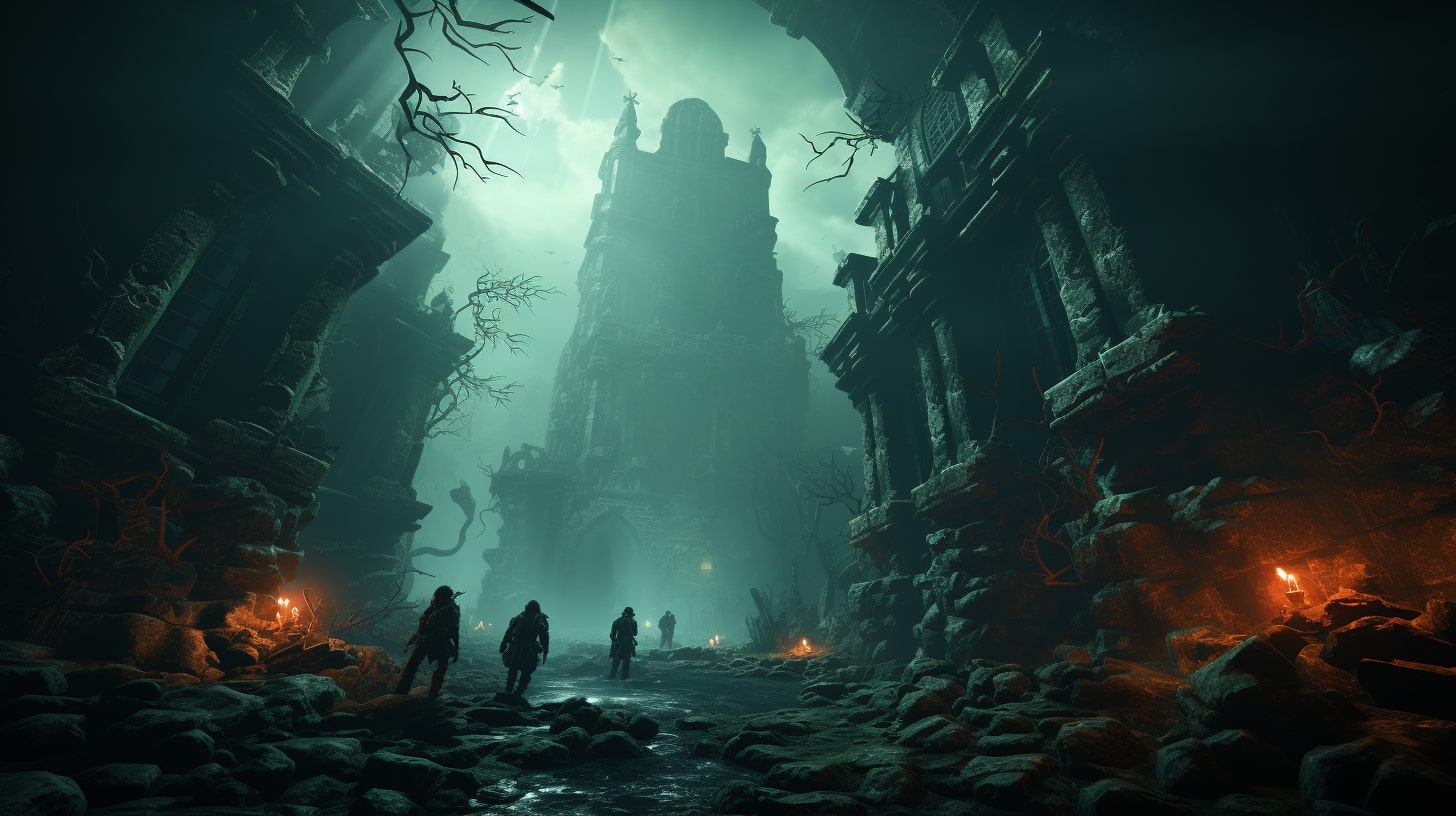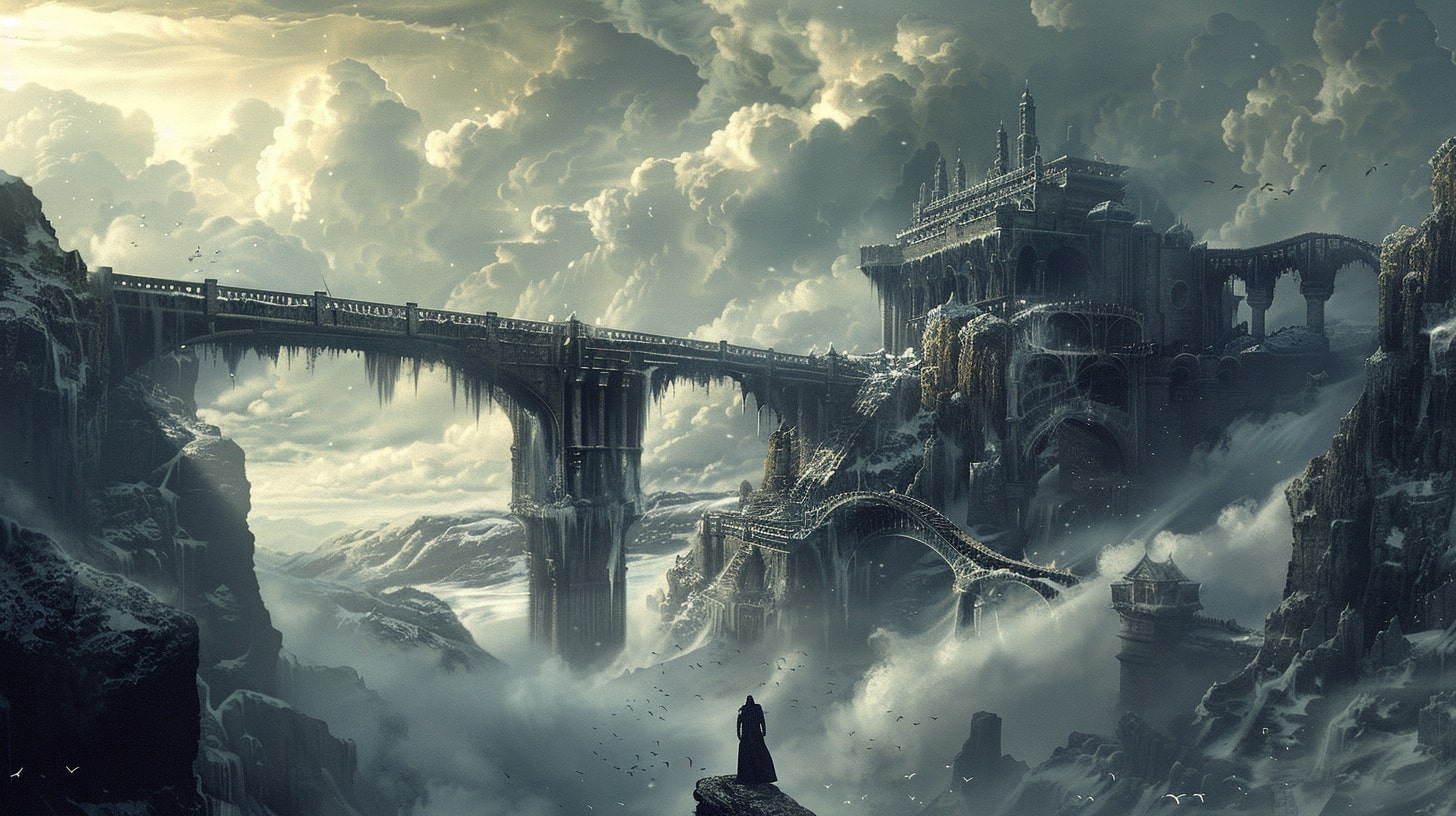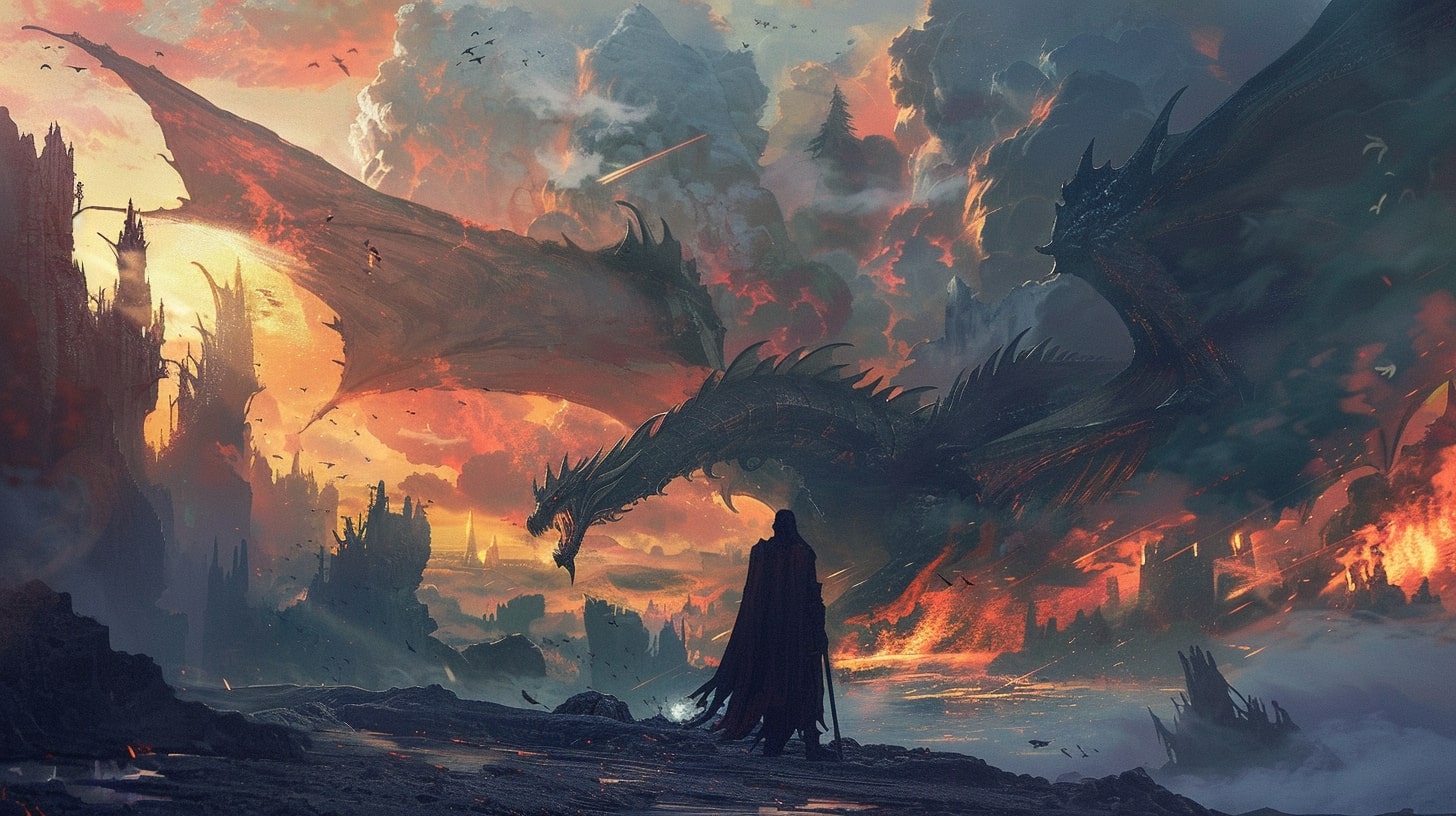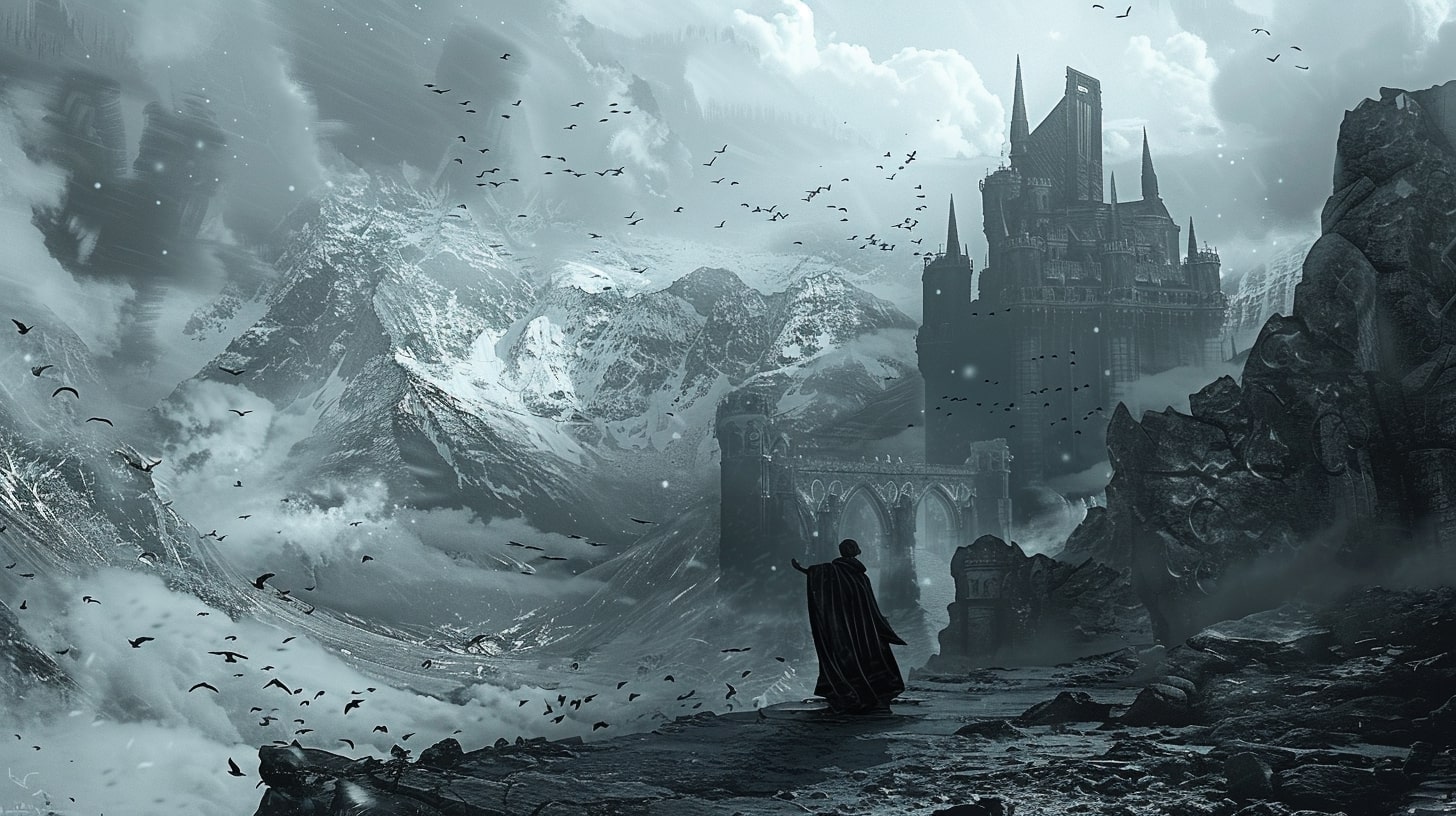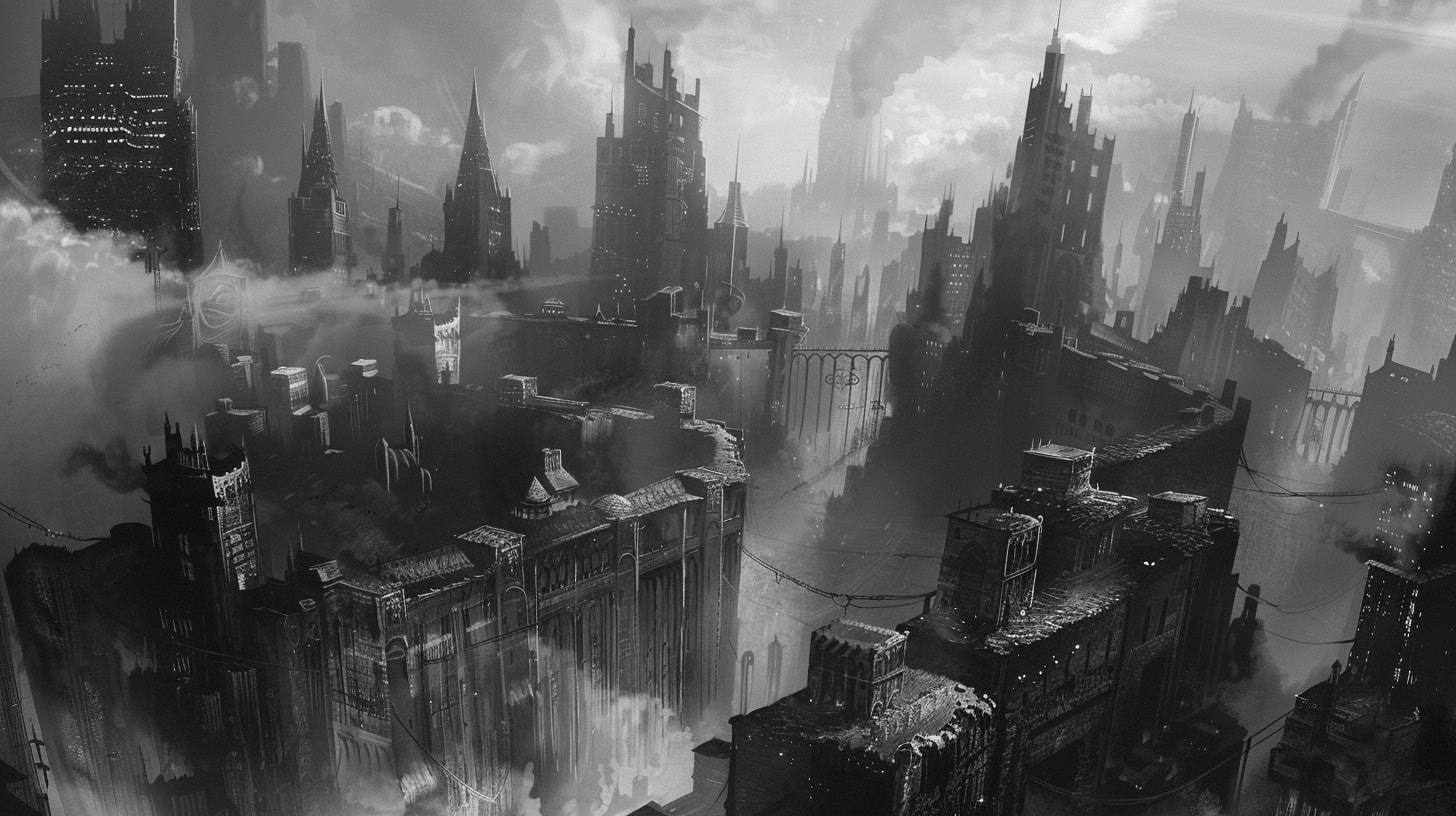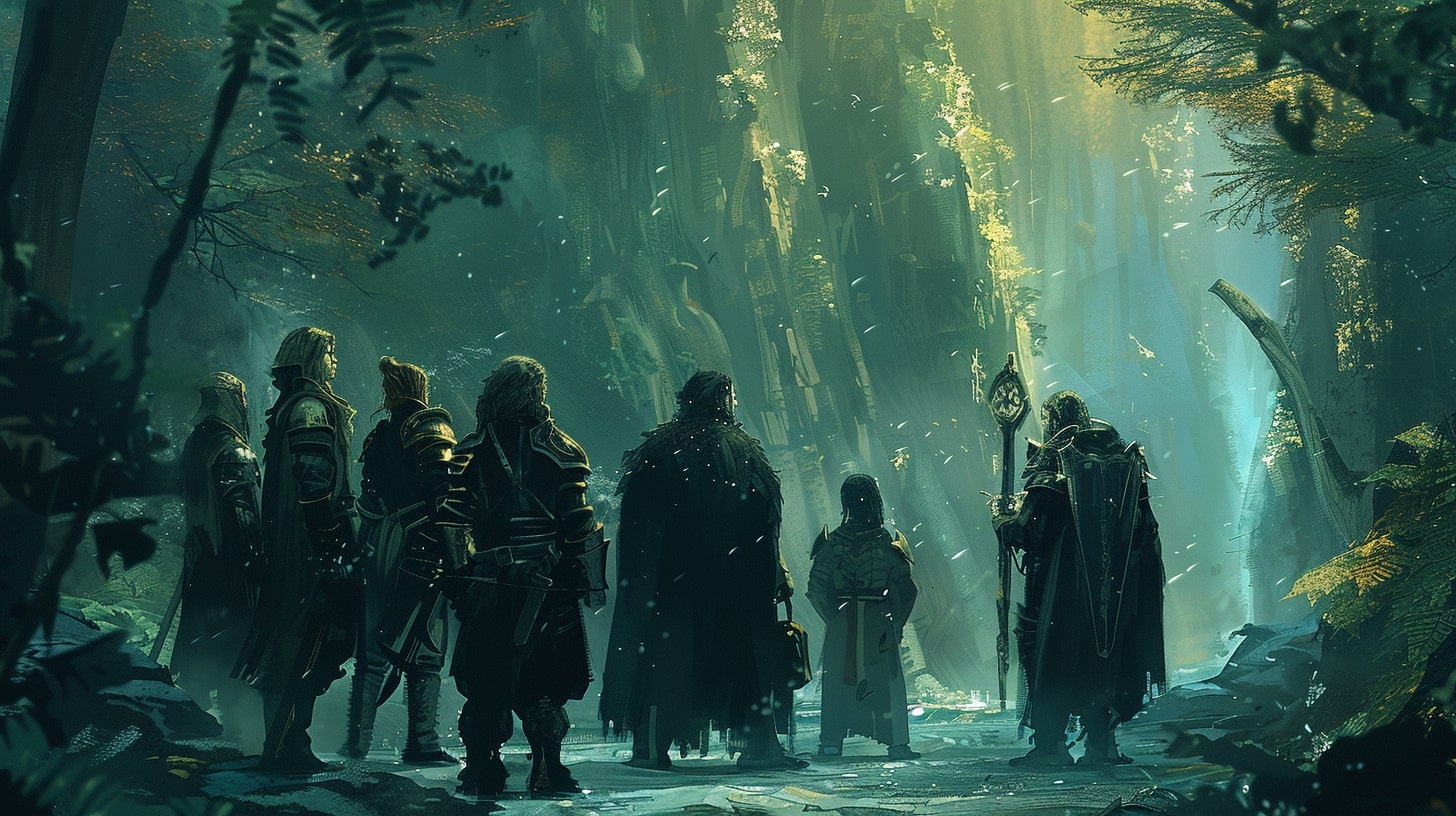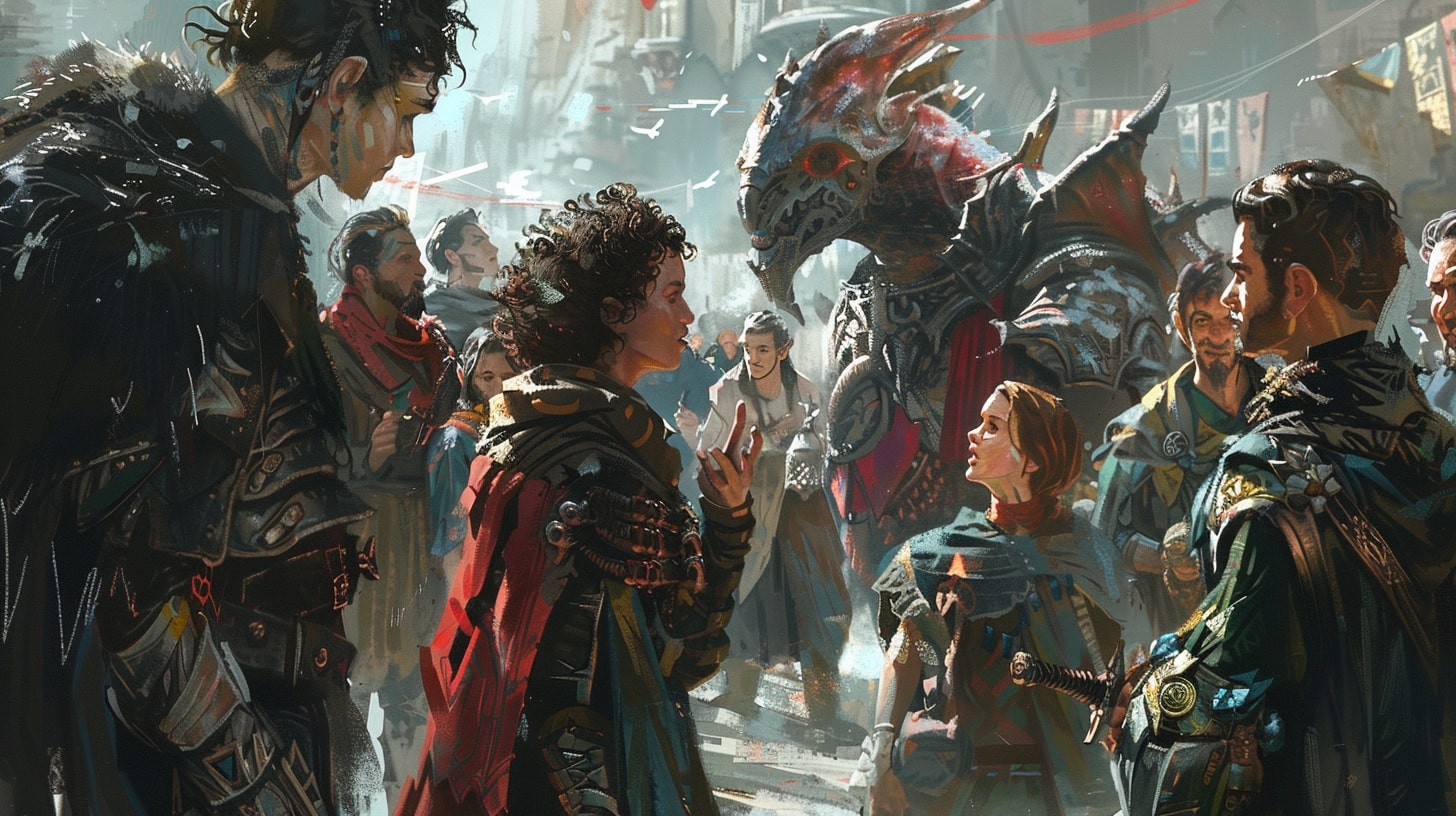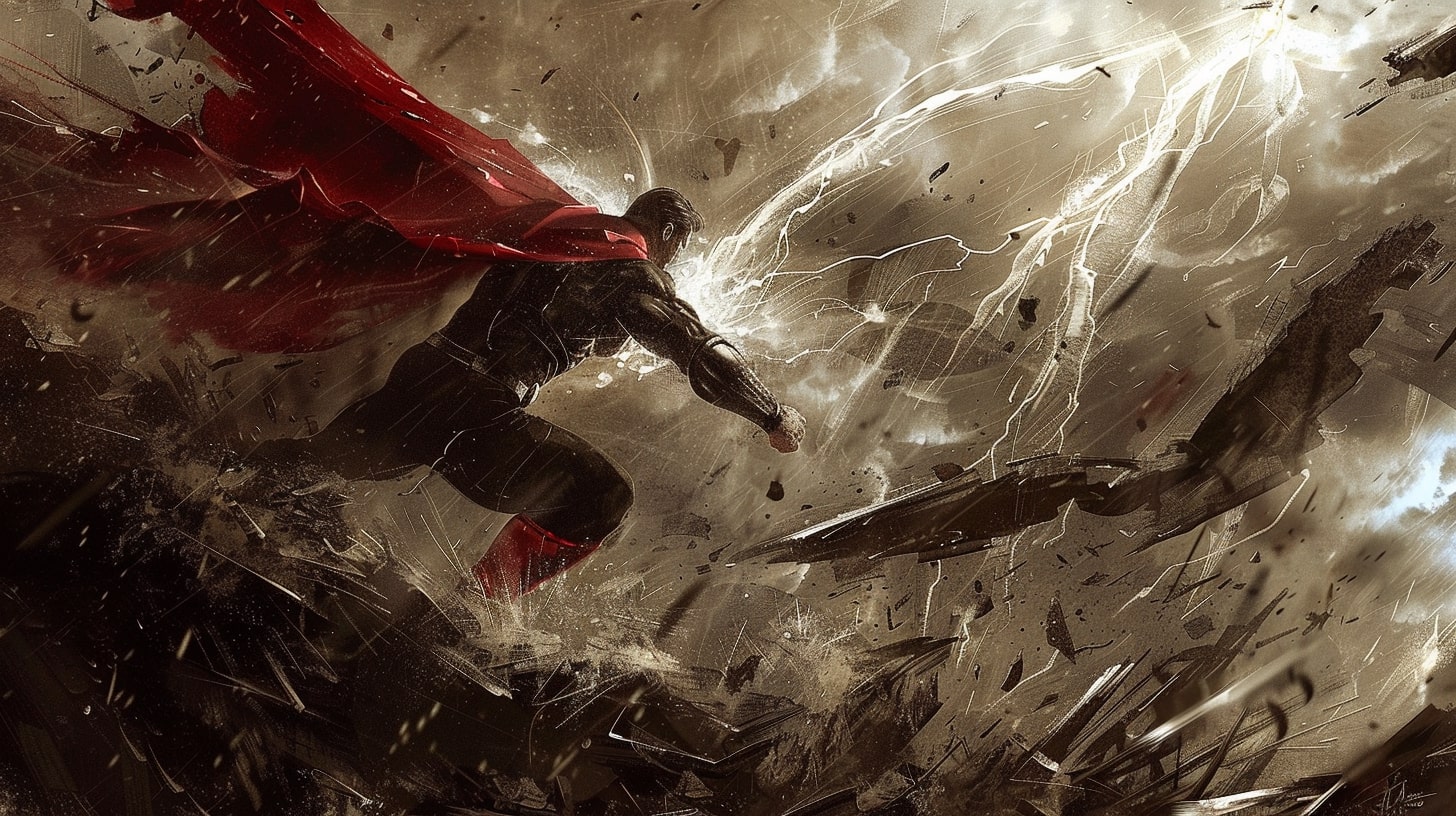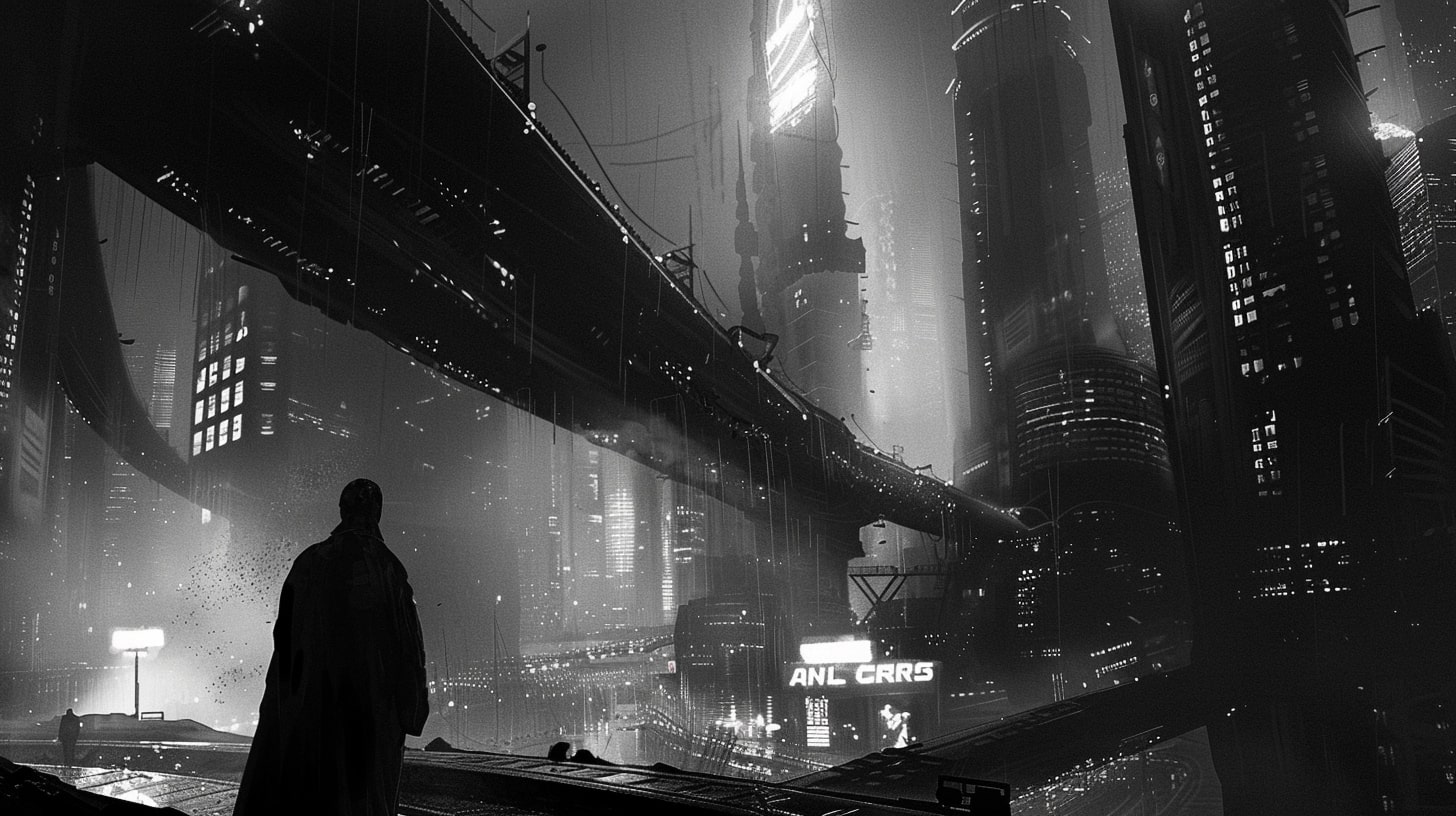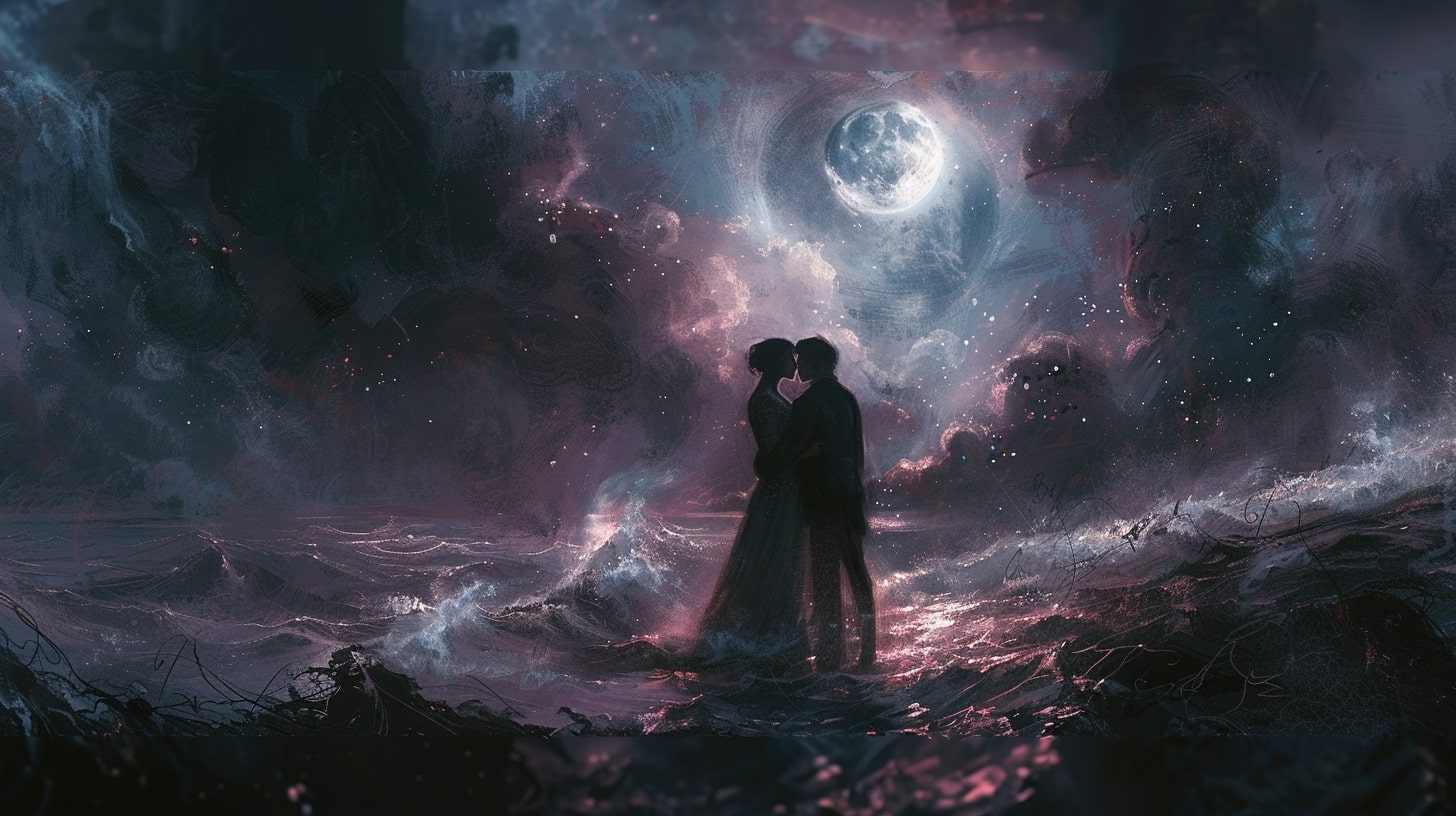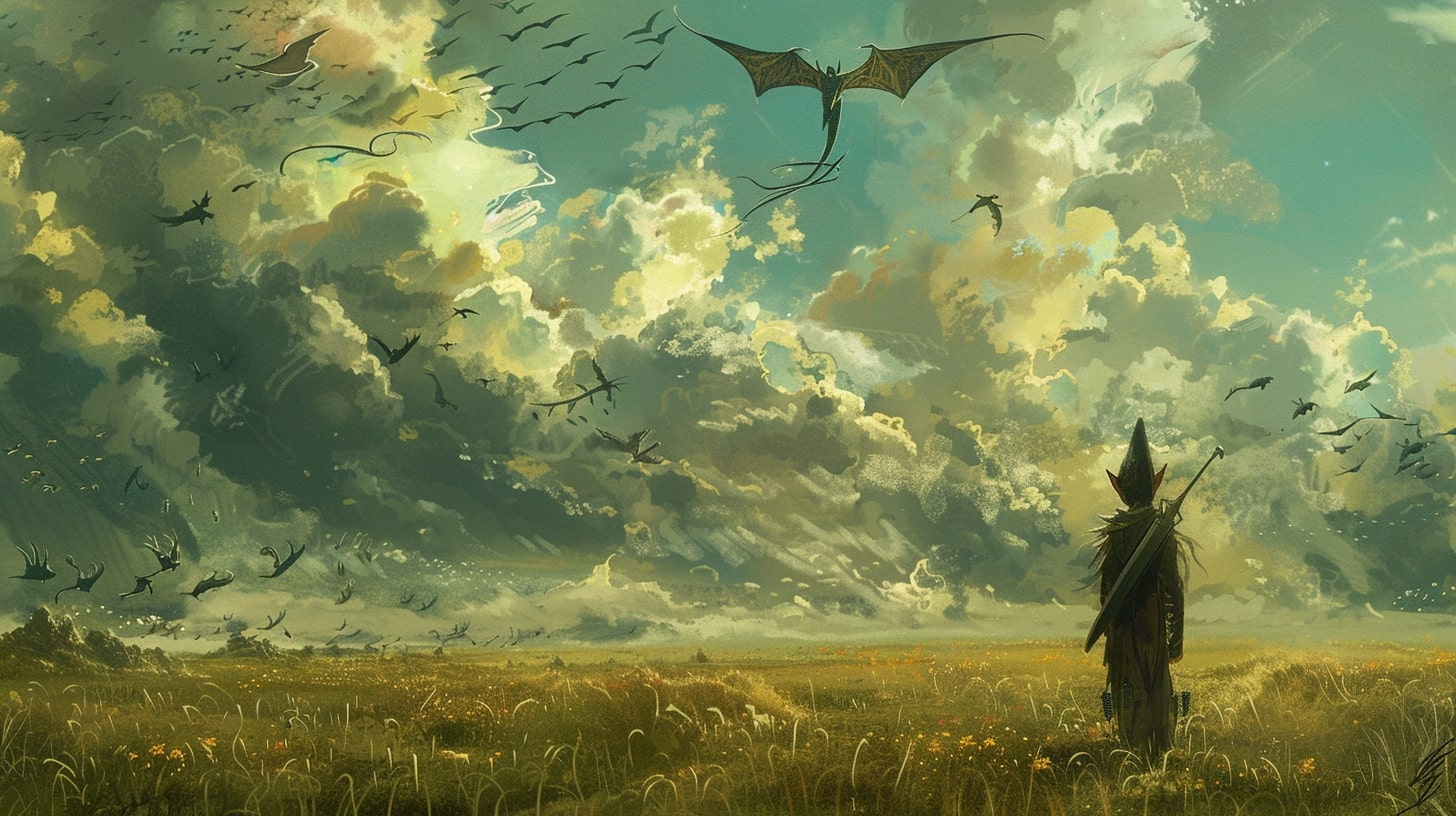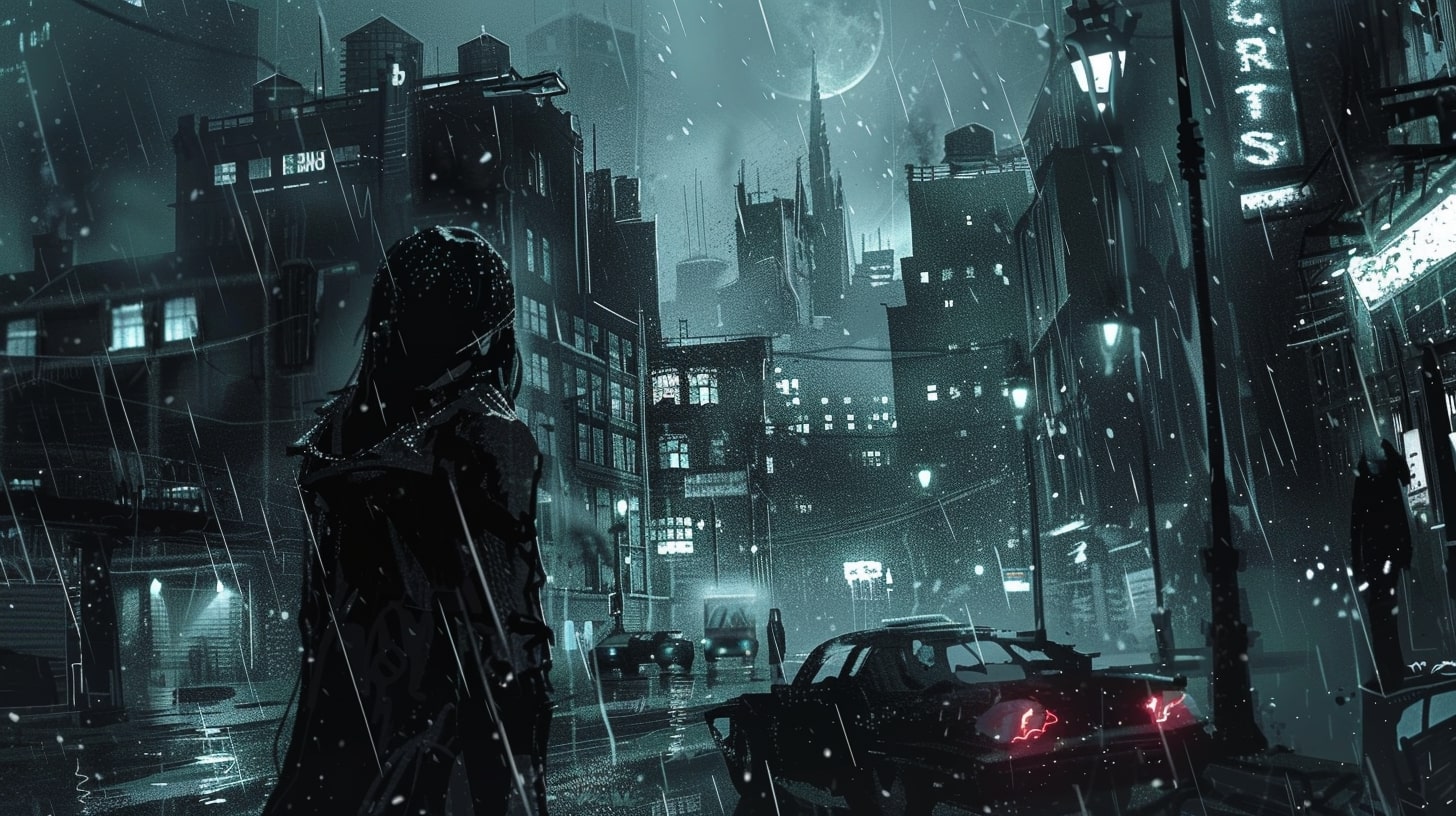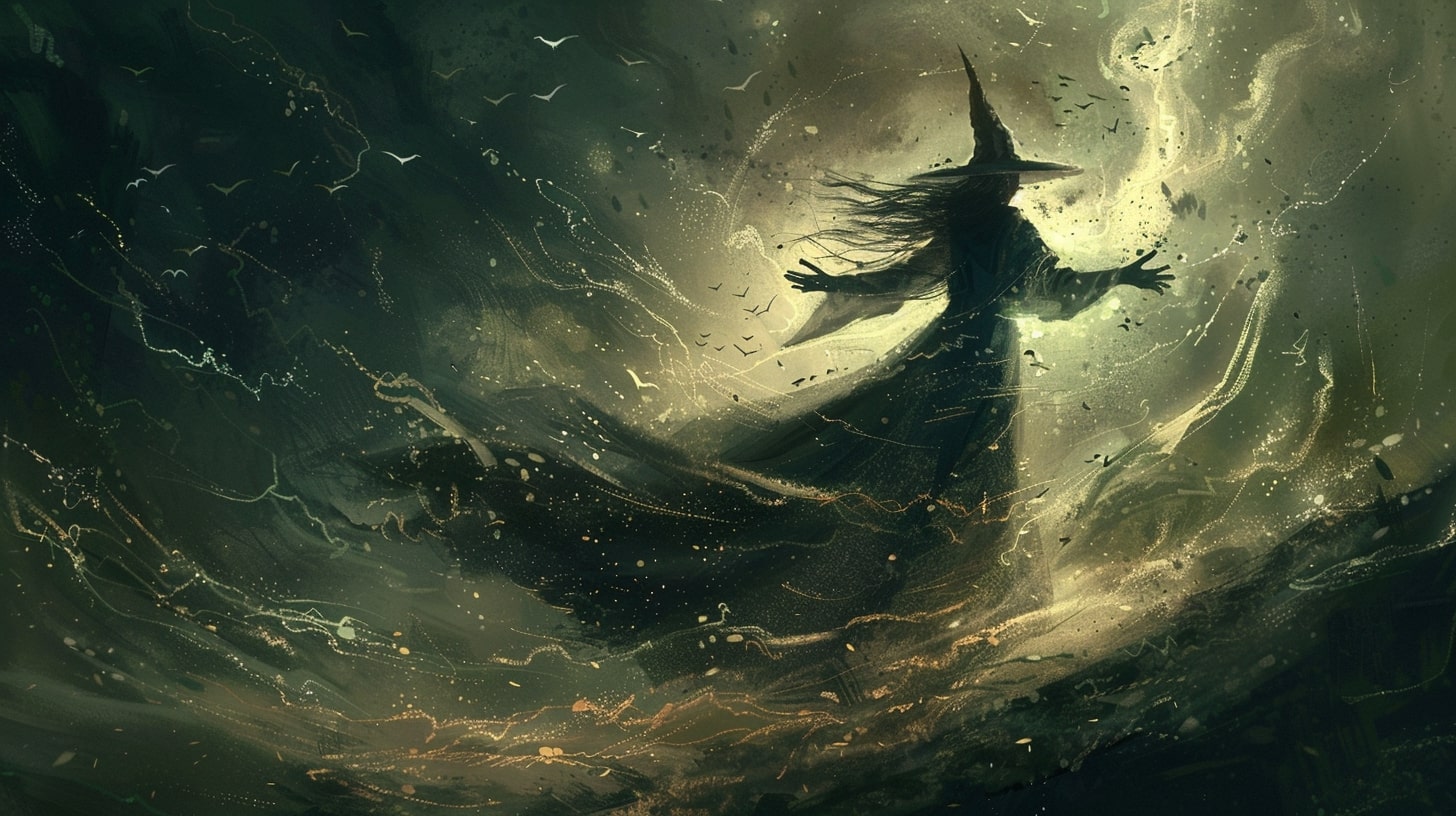Look, I need to tell you something, and it might hurt a bit. That amazing fantasy world you've spent months crafting? The one with the intricate magic system and three thousand years of carefully plotted history? Your readers are skipping those parts.
I know, I know. It hurts. I've been there. I spent six months building a world so detailed I could tell you what my medieval fantasy peasants ate for breakfast on Tuesday. But here's the thing about fantasy writing that nobody wants to admit - your world's incredible backstory matters about as much as yesterday's weather unless you know how to set the stage right.
Let me paint you a picture. Two books, both fantasy. Both sitting on my desk right now.
Book One starts with three pages explaining the political structure of the Eternal Empire and how the magical Council of Seven maintains order through their ancient powers granted by the Gods of Whatever.
Book Two starts with a street vendor trying to sell definitely-not-stolen magical trinkets while keeping one eye out for the city guard, all while the smell of illegal dragon-spiced soup wafts through the air.
Guess which one I'm still reading?
Here's what nobody tells you about setting the stage in fantasy - it's not about building the stage at all. It's about making your readers forget they're on a stage in the first place.
Think about the last time you visited a new city. Did you immediately look up its complete history and memorize its governmental structure? Or did you notice the weird smell from that street food cart, the way people avoided eye contact on the subway, and how the buildings all seemed to lean slightly to the left?
That's what we're going to talk about today. Not how to dump information about your world like a history professor after too much coffee, but how to make your readers feel like they've just stepped through a door into a place that's been breathing and living and existing without them.
Because here's the truth - your readers don't need to understand everything about your world. They just need to feel it. And I'm going to show you exactly how to make that happen.
Ready to learn how to actually set the stage in your fantasy world? Let's dive in. But first, we need to talk about why so many writers get this completely wrong.
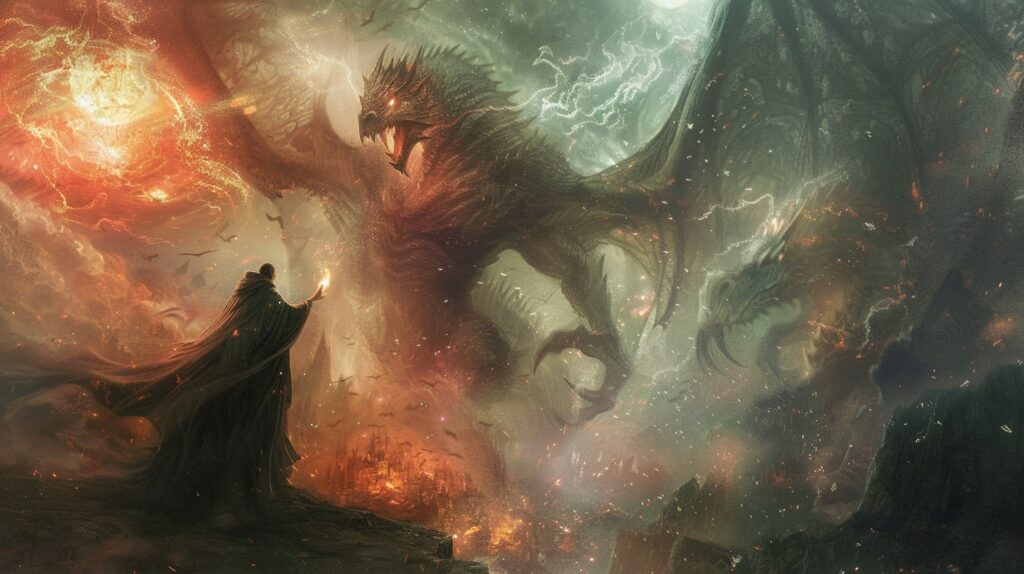
The Real Problem With Fantasy Intros
Let me tell you about my biggest embarrassment as a writer. It was my first fantasy novel, and I opened with - I kid you not - a creation myth. Two thousand words about how the gods forged the world and created the seven magical bloodlines. I thought it was brilliant. My beta readers thought it was better than NyQuil for falling asleep.
Here's the thing about fantasy writers. We fall into this trap because we're in love with our worlds. We've spent months, maybe years, crafting every detail. We know the history, the politics, the magical theory. And by god, our readers are going to appreciate all that work!
Except they won't. Because that's not how humans experience new places.
Think about the last time you started a new job. Did your boss sit you down and explain the complete corporate history since 1963? Or did you learn about the workplace by noticing that Karen from accounting gets weirdly territorial about the good coffee mug, and that nobody uses the third floor bathroom after 2 PM for reasons nobody wants to discuss?
But I hear you saying "My readers need to understand how magic works in my world!" or "The political situation is crucial to the plot!"
No. They really don't. Not yet.
You know what they need? They need to care first. They need to feel something. They need to want to learn more.
Let me show you what I mean. Here are two ways to introduce a magic system:
Version A:
"The Arkanic Magic System was developed three centuries ago by the Grand Mage Thaddeus, who discovered that by combining elemental resonance with lunar cycles…"
Version B:
"Maya's fingers trembled as she tried to weave the spell. The thread of magic kept slipping, like trying to thread a needle while wearing oven mitts. If she got it wrong again, that would be her third failure. And nobody in the Academy's history had survived a fourth."
See the difference? Version A explains magic. Version B makes you feel it.
The real problem isn't that writers include too much information. It's that they include it at the wrong time and in the wrong way. They try to build the entire stage before letting the play begin.
But here's the secret that took me way too long to learn. Your readers are smarter than you think. They don't need every detail up front. They're actually pretty good at figuring things out as they go along - just like they do in real life.
What they need is just enough to make them curious. Just enough to make them feel like they're somewhere real. Just enough to make them want to turn the page.
The rest? That can come later. When they're ready. When they're asking for it.
So how do we actually do this right? How do we set the stage without boring our readers to tears? Well, that's what we're going to talk about next.

The Building Blocks That Actually Matter
Want to know the biggest secret in fantasy writing? Your world isn't built with history books and magic systems. It's built with sensory details that punch your readers in the gut and make them feel like they're breathing your world's air.
Let me share something that changed my entire approach to setting the stage. I was struggling with the opening of my second book when my critique partner asked me a simple question that knocked me sideways.
"What does your magical marketplace smell like?"
Not what rare artifacts they sell. Not the complex economic system behind it. Not its ancient history. Just what does it smell like?
And that's when everything clicked.
Here are the building blocks that actually matter when you're setting the stage in fantasy.
Sensory Details That Stick
Your magical marketplace? Maybe it smells like burning cinnamon and ozone from botched spells. The cobblestones might be worn smooth and slightly warm from years of magical residue. The air might taste like copper pennies.
These details do more than paint a picture. They make your world feel lived-in. Real. They give your readers something to grab onto.
The Tuesday Test
Here's a game-changer. Before you write any scene, ask yourself "What happens here on a regular Tuesday?" Not during the epic magical battles. Not during the grand ceremonies. Just Tuesday.
Maybe the apprentice wizards have to sweep up the magical residue before it starts spawning random creatures. Maybe the dragon riders have a union-mandated coffee break at 10 AM sharp. Maybe someone has to clean the unicorn stables, and they're really tired of the sparkles getting everywhere.
These mundane details? They're pure gold. They make your world feel like a place where people actually live, not just a backdrop for your plot.
Character Perspective is Everything
Stop thinking like a world-builder for a minute and start thinking like your characters. They don't see their world as a carefully crafted fantasy setting. They see it as Tuesday.
A street kid in your magical city doesn't care about the complex theoretical framework behind levitation spells. They care about which floating market stalls are easy to steal from and which ones have protective wards that'll turn you purple for a week.
That merchant doesn't think about the centuries-old trade agreements. They think about how the new tariff on dragon scales is going to affect their profit margins this quarter.

The Power of Contrast
Here's another trick that took me way too long to learn. Want to make your fantasy elements pop? Contrast them with the ordinary.
Maybe your mighty wizard still has to deal with a leaky roof in their tower because the Magical Maintenance Department is backed up for months. Maybe your vampire hunter can't start their nightly patrol until they find a babysitter who's okay with their weird hours.
These contrasts do two things. They make your world feel more real, and they make the magical elements feel more magical by comparison.
The Rule of Natural Revelation
Last but crucial. Your world's details should come out naturally through your characters' interactions with it. If something's important, it should affect your characters in a way that makes them notice it.
Don't tell me the city has strict magic regulations. Show me your character taking a sketchy back-alley detour because they can't afford a casting license. Don't explain your currency system. Show me someone counting out weird coins and grumbling about the exchange rate.
These are the building blocks that matter. Not because they explain your world, but because they make your readers feel like they're living in it.
But knowing what blocks to use is only half the battle. Next up, I'm going to give you the exact toolkit you need to put these blocks together in a way that'll keep your readers glued to the page.
Your Stage-Setting Toolkit
Alright, enough theory. Let's get our hands dirty with some actual tools you can use right now. These aren't just vague suggestions - they're battle-tested techniques I've learned from years of face-planting into every possible world-building mistake.
The Five Senses Plus One Method
This is your new best friend. For every important scene, hit these points:
- Sight: Not just what's there, but what stands out. Maybe the floating lanterns in your magical marketplace cast weird double shadows
- Sound: The background noise matters. Those magical cleanup crews might hum annoying jingles while they work
- Smell: The most memorable sense. Your magical library might smell like dust and ozone with a hint of burned hair from spell practice gone wrong
- Touch: The texture of your world. Those ancient magical stones might feel oddly warm, or that enchanted fabric might wiggle under your fingers
- Taste: Even the air can have a taste. Maybe casting spells leaves a metallic tang in the mouth
- Plus One: The magical sense. How does magic feel in your world? Maybe it makes teeth itch or creates a pressure behind the eyes
But here's the trick - you don't info-dump all these at once. You sprinkle them in naturally as your character moves through the scene.

The Conversation Drip
Want to share world details without boring your readers? Let your characters talk about them - but make sure they have a reason to talk.
Bad Example:
"As you know, brother, our kingdom has been at war with the Dark Realm for three hundred years."
Good Example:
"Can't believe they're upping the war tax again. My gran says back in her day, you could actually see the sun before all these Dark Realm smoke monsters showed up."
See the difference? The second one feels natural because people actually talk that way about things that affect their lives.
The Conflict Reveal
This is the ninja technique of world-building. Every rule or detail you introduce should create or solve a problem for your characters.
Don't tell me magical healing is regulated. Show me your character trying to hide an illegal healing charm from the Magic Control Officers while their friend is bleeding out.
The Background Painter
Think of your world details like layers of paint:
- Base Coat: The immediate environment
- First Layer: The normal activity
- Details: The weird fantasy stuff that's totally normal to your characters
- Final Touches: The stuff that's unusual even in your world
Example:
"Maya ducked into the marketplace (base), weaving between the morning crowd of shoppers (normal activity). Above them, the usual flock of delivery griffins circled, waiting for landing spaces (weird but normal). She paused, frowning at the sight of Enforcement Officers checking everyone's magic licenses - that wasn't normal for a Tuesday (unusual even here)."
The Question Generator
For every scene, ask these questions:
- What would a newcomer notice first?
- What would a local take for granted?
- What's breaking the normal pattern right now?
- What's irritating people here?
- What shortcuts do people take?
The Rule of Three
When introducing a new element, give three quick details about it. Just three. Make them count.
Example:
"The city's magical trams floated three feet off the ground, smelled faintly of lavender, and had an annoying habit of humming popular dance tunes when they were low on power."
That tells you more about this world than two paragraphs of technical explanation about how magical trams work.

The Natural Progression
Build your world like a tour guide who actually lives there:
- Start with what's right in front of you
- Add what's affecting your character right now
- Bring in what they're worried about
- Drop hints about bigger issues
But here's the most important tool in your kit - the delete button. Every detail you include should either move the story forward, reveal character, or make your world feel real. If it's not doing at least one of those things, it goes in your world bible, not your story.
Next up, we'll look at how to layer these tools together to create a world that feels deep without drowning your readers in details.
The Three Layers of Fantasy Stage-Setting
Think of your fantasy world like a cake. Not because it's sweet (though it might be), but because it needs layers to work. Miss a layer, and the whole thing falls flat. Add them in the wrong order, and you've got a mess. Let me show you how to build these layers so they actually work together.
Layer 1: The Immediate Environment
This is your "right now" layer. The stuff your character can touch, smell, see, or trip over. It's the foundation of everything else, and here's why most people get it wrong - they think big when they should think small.
Bad example:
"The magical city of Arkanthia spread out before her, its ancient spires reaching toward the heavens, three thousand years of history carved into every stone."
Good example:
"The loose cobblestone wobbled under Maya's foot again. She really needed to stop taking this shortcut, but the main street meant walking past three different magic-detection checkpoints, and her license had expired last week."
See what happened there? The second one tells you more about the world by showing less. We learn:
- There's magical regulation
- Some people avoid it
- The infrastructure isn't perfect
- Magic needs licenses
All without explaining any of it directly.
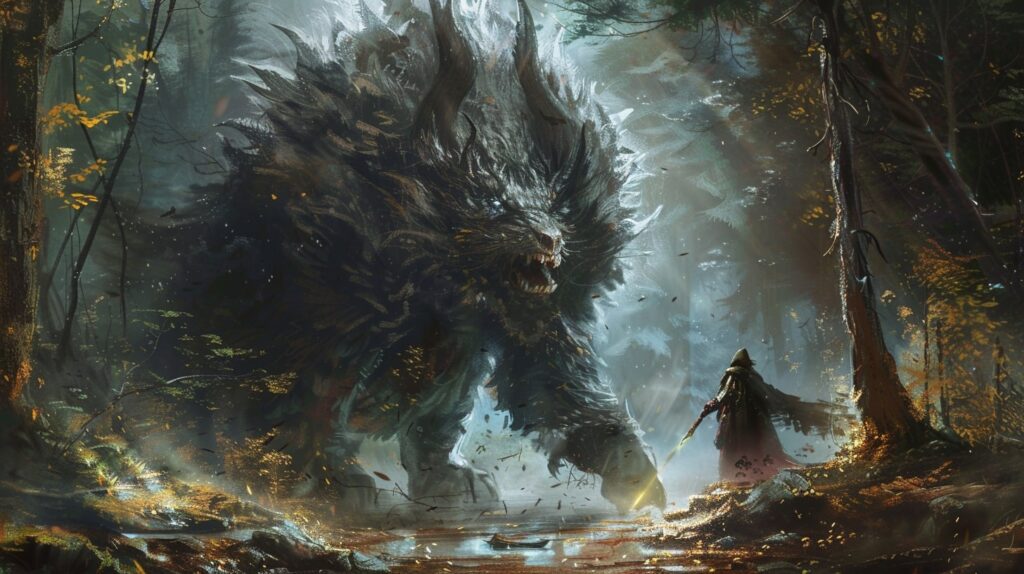
Layer 2: Social Context
This is where people interact with your world and each other. It's the layer that turns your setting from a backdrop into a living place. But here's the trick - you show it through reactions, not explanations.
Bad example:
"The social hierarchy of the Mage's Guild was strictly enforced, with seven distinct ranks…"
Good example:
"Maya tugged her sleeve down to hide her bronze caster's mark. Last time she'd left it visible, some silver-marked idiot had spent twenty minutes loudly explaining how she was holding her wand wrong."
The second one shows hierarchy, social tension, and daily annoyances all at once. It feels real because it feels personal.
Layer 3: World Rules
This is the big stuff - your magic systems, your politics, your world-spanning conflicts. But here's the secret most writers miss - these things should mostly stay in the background until they directly affect your character.
Bad example:
"The War of Seven Crowns had reshaped the political landscape, leading to the current system of magical taxation…"
Good example:
"The war tax collector's golem clanked down the street, its crystal eyes scanning each shop front. Maya ducked into a doorway. She'd already paid this month's magic tax, but these new models could somehow smell residual magic use. And she'd definitely done some off-the-books enchanting last night."
The difference? The second one makes your world's rules matter right now, to this character, in this moment.

Putting The Layers Together
Here's how you layer these elements in practice. Start with:
- What's happening right now
- The immediate physical details
- The current situation
- The urgent problems
- Add the social elements
- How people react
- What's normal vs what's not
- The small frustrations
- Bring in the bigger picture
- But only when it matters
- And only as much as needed
- Through personal impact
The Magic Formula
Here's what it looks like all together:
"The loose cobblestone wobbled under Maya's foot (immediate physical detail), and she stumbled into a well-dressed mage who shot her the usual bronze-mark-means-backup look (social context). Above them, the war tax collector's golem clanked along its daily route, crystal eyes scanning for magical signatures (world rules). Maya ducked into the nearest doorway, cursing under her breath. She'd already paid this month's tax, but after last night's illegal enchanting, she couldn't risk a residual magic scan. Not with the penalties tripled since the Seventh Crown fell (personal stakes tied to world history)."
See how each layer builds on the others? None of them exist in isolation. They all work together to create a world that feels real because it's being experienced, not explained.
Next up, we'll talk about how to make your world feel truly lived-in without writing a novel-length history book.

Making Your World Feel Lived-In When Setting the Stage
Let me tell you about the biggest mistake I made when setting the stage for my first fantasy novel. I treated my world like a movie set - all shiny facades and perfect props. But real worlds aren't like that. They're messy. They're worn. They've got history baked into every corner.
You want to know the secret to setting the stage right? It's all about the scuff marks.
The Power of Small Details
Think about your kitchen right now. What makes it feel lived-in? It's not the big stuff. It's the little things:
- That one drawer that always sticks
- The weird way you have to jiggle the faucet
- The scratch on the counter from that time you missed with the can opener
Your fantasy world needs these kinds of details. When you're setting the stage, these tiny imperfections tell readers "people actually live here."
The Background Noise That Matters
Want to know what really brings a world to life? The stuff happening in the background. Not the epic magical battles - the everyday magic.
Bad stage-setting:
"The grand magical marketplace bustled with activity."
Good stage-setting:
"A street sweeper grumbled as he cleaned up the glittery residue from the morning's charm sales, while overhead, a maintenance witch tried to talk down a lamp post that had developed anxiety during the night shift."
The second one works better because it shows people dealing with the everyday consequences of living in a magical world.
Creating Living History
Here's how to make your world feel like it existed before your story started:
- Add wear and tear
- Magical doorways with scuff marks at wand height
- Shop signs with outdated spell warnings
- Patches of enchanted cobblestone that need replacing
- Show adaptation
- How people work around magical problems
- The shortcuts they've figured out
- The rules they bend
- Layer in daily rhythms
- Morning routines in a magical city
- Regular maintenance of enchanted items
- Common annoyances everyone deals with
The Memory Effect
When setting the stage, think about how memories work. We don't remember places as lists of facts - we remember them as collections of experiences:
- The smell of that one bakery
- The way the light hits the buildings at sunset
- The spot where you always stub your toe
This is how you should present your world. Not as a guidebook, but as a place where memories are being made right now.

The Living World Checklist
When setting the stage for any scene, make sure you have:
- Signs of regular use
- Evidence of repairs or maintenance
- People doing ordinary jobs
- Common inconveniences
- Local shortcuts or workarounds
Bringing It All Together
Here's what it looks like in practice:
"The enchanted elevator creaked on its way up - it always did, ever since that incident with the gravity-reversal spell last summer. Maya held her breath past the third floor (old habit, even though they'd finally fixed that weird mushroom problem), and pushed against the door in just the right spot to make it open. The building's maintenance wizard had promised to fix it properly next week, but he'd been saying that since before the last Wizard's Council election."
This works because it's not just describing a place - it's showing a place that people have been living in, dealing with, and working around.
Next up, we'll tackle the common stage-setting pitfalls that can make your carefully crafted world fall flat.
Common Stage-Setting Pitfalls in Fantasy Writing
Look, we've all been there. You're setting the stage for your epic fantasy, and suddenly you realize you've spent three pages describing the architectural history of a magical tower that your character only walks past once. Time for some real talk about the traps we fall into when setting up our worlds.
The Grand Tour Syndrome
You know what I'm talking about. Your character arrives somewhere new, and suddenly they turn into a tourist with an audioguide, noticing every architectural detail and pondering the historical significance of every brick.
Bad stage-setting:
"Ariana gazed at the Spire of Ancient Wisdom, taking in its seven tiers, each representing one of the original magical disciplines. The third level, dedicated to transmutation, featured gargoyles carved by the master mason Gerard in the Year of the Purple Moon…"
Good stage-setting:
"Ariana hurried past the Spire, cursing as another chunk of enchanted gargoyle droppings nearly hit her. Someone really needed to talk to Maintenance about the pest control budget."
The difference? The second one shows the place through the eyes of someone who actually lives there.
The Encyclopedia Download
This is what happens when you're so excited about your world that you forget you're telling a story. I call it the Wikipedia Walkthrough.
Bad stage-setting:
"The Kingdom of Mystara had developed its current magical education system over three centuries ago, when the Great Mage Thaddeus established the first regulated…"
Good stage-setting:
"Another failed apprentice stumbled out of the testing hall, their hair still smoking. Maya checked her watch. Ten minutes until her own exam, and she still couldn't remember if it was three stirs clockwise or counterclockwise for a basic levitation brew."
Remember, your world's history matters way less than what's happening right now.
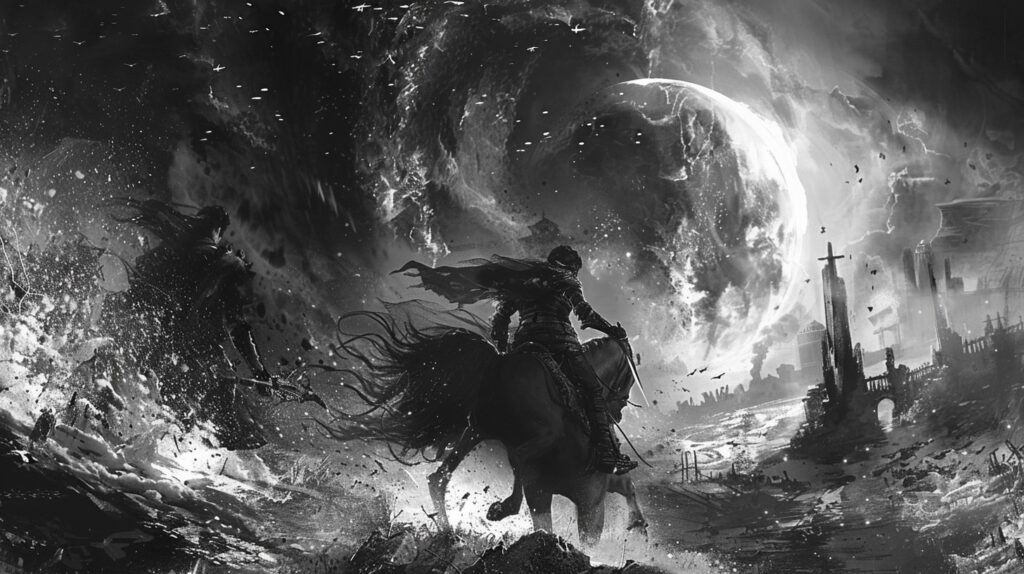
The "Look How Clever I Am" Trap
Oh boy, this one hurts because I've done it so many times. You've created this brilliant magic system or political structure, and by god, everyone's going to appreciate its brilliance!
Bad stage-setting:
"The intricate relationship between lunar phases and magical resonance frequencies meant that spells cast during the waxing gibbous had a 3.7% increase in efficiency, while the implementation of quarterly taxation on magical resources led to…"
Good stage-setting:
"Maya checked her lunar chart and swore. Of course the client wanted their enchantment done tonight, during the most expensive phase of the moon. And with the new magic tax, she'd barely break even."
Show the impact, not the infrastructure.
The Kitchen Sink Catastrophe
This happens when you try to show everything at once. Your opening scene has dragons, unicorns, magical smartphones, ancient prophecies, and talking trees - and readers have no idea where to look.
Bad stage-setting:
"As the dragon flew over the cybermage tower, casting a shadow on the ancient ruins where the unicorn parliament was in session, Maya adjusted her magical neural implant while consulting the prophecy her talking cat had just delivered…"
Good stage-setting:
"Maya's magical neural implant buzzed again. Same error message as always. 'Warning: Dragon approaching.' She really needed to update the firmware - it had been giving false positives ever since that unicorn stampede overloaded the city's ley lines."
Pick your moments. Introduce your cool elements one at a time.
The Static World Mistake
This is when your world feels like it's been frozen in time, waiting for your main character to arrive and press the "play" button.
Bad stage-setting:
"The magical market stood exactly as it had for centuries, unchanged by time…"
Good stage-setting:
"The magical market had relocated three times in the past year alone, chasing the shifting ley lines across the city. Maya missed the old location - the new one didn't have that noodle stand with the suspiciously addictive dragon sauce."
Your world should feel like it's been changing and evolving long before your story started.
The Cardboard Cutout Fantasy
This is when everything in your world exists solely to serve the plot. Every shop sells exactly what your hero needs, every random encounter provides exactly the right information.
Bad stage-setting:
"Conveniently, the first person Maya asked knew exactly where to find a rare shadow crystal…"
Good stage-setting:
"It took Maya three hours and seven different shops to find someone who'd even heard of shadow crystals, and that guy turned out to be trying to sell her painted quartz. Again."
Real worlds aren't convenient. That's what makes them feel real.

The Fix-It Formula
When you catch yourself falling into these traps, ask yourself:
- What would annoy a local about this place?
- How has this place changed recently?
- What breaks down regularly?
- What workarounds have people developed?
- What's happening that has nothing to do with your plot?
Remember, you're not just setting the stage - you're building a living, breathing world that exists beyond the boundaries of your main plot.
Next up, we'll get into the actual action plan for putting all this together in your own writing.
The Action Plan: Making Stage-Setting Work in Your Fantasy Writing
Alright, enough theory. Let's get our hands dirty. Here's your step-by-step action plan for setting the stage in your fantasy world without putting your readers into a coma. I've tested these steps repeatedly, and they work.
The Three Questions Method
Before writing any scene, ask yourself:
- "Who's cleaning this place?"
Nothing exists without maintenance. Magical floating castles still need window washers. Dragon stables need mucking out. Showing maintenance tells readers this place really works. - "What's broken?"
Perfect worlds feel fake. Maybe the magical elevators are temperamental. Maybe the enchanted messaging system glitches during full moons. These flaws make your world feel lived-in. - "What's annoying the locals?"
Every place has its irritations. Maybe it's the apprentice wizards practicing levitation spells during rush hour. Maybe it's the dragons using the public parks as landing pads.
The Scene-Setting Worksheet
For each new location, fill this out:
- Three things someone would notice immediately
- Two background sounds or activities
- One smell that defines the place
- Three signs of regular use or wear
- Two things that recently changed
- One ongoing minor problem
The Stage-Setting Process
Here's how to actually write it:
- First Draft
- Write the scene focusing on action
- Mark spots where description feels needed
- Don't stop to world-build yet
- Second Pass
- Add immediate sensory details
- Include one sign of wear and tear
- Show one background activity
- Third Pass
- Add one piece of history through current impact
- Include one minor inconvenience
- Show one local workaround
The Integration Method
When adding world details, always connect them to:
- Something happening right now
- Something affecting your character
- Something causing a problem or solution
Bad:
"The city's magical transport system used enchanted crystals…"
Good:
"Maya swore as the transport crystal flickered again. At this rate, she'd have to walk home. Budget cuts meant they were using cheaper crystals, and everyone knew those couldn't hold a charge past sunset."
The Testing Protocol
After writing a scene, run these checks:
- The Tourist Test
- Could this description apply to any fantasy city?
- If yes, add specific details
- The Local Test
- Would someone who lives here notice all this?
- If no, cut the touristy observations
- The Activity Test
- Is something happening in the background?
- If no, add some life to the scene
Quick Fixes for Common Problems
Problem: Info-dumping
Fix: Break information into chunks, reveal each piece when it affects your character directly
Problem: Static description
Fix: Add one moving element and one changing element to every scene
Problem: Generic fantasy setting
Fix: Add three specific details that could only exist in your world
The Emergency Repair Kit
When a scene isn't working:
- Add immediacy
- What's happening right now?
- What needs fixing?
- What's about to go wrong?
- Add life
- Who else is here?
- What are they doing?
- Why are they annoying your character?
- Add context
- What changed recently?
- What's about to change?
- What's causing problems?
Your Daily Practice
Try these exercises:
- Take a normal place and add one fantasy element
- List three ways that fantasy element would affect daily life
- Write a scene about maintaining that element
Example:
Normal: Coffee shop
Fantasy Element: Time-freezing cream
Effects:
- Baristas need temporal handling licenses
- Complaints about drinks getting temporally stale
- Weekly inspections by Time Regulation Officers
Remember
You're not building a stage set - you're creating a place where stories happen. Your world should feel like it exists before, during, and after your main plot.
Next up, we'll look at some before and after examples to see these principles in action.
Putting It All Together: Stage-Setting Before and After
Look, we've covered a lot of ground. But nothing beats seeing these principles in action. Let's take some typical fantasy scenes and transform them from snooze-fests into living, breathing moments. I'll break down exactly why the changes work.
Example 1: The Magical Marketplace
BEFORE:
"The Grand Magical Marketplace of Aldermere was the largest in the Seven Kingdoms, established five hundred years ago by the great merchant-mage Alderous. Its famous crystal dome sparkled in the sunlight, and hundreds of vendors sold their magical wares from stalls decorated with ancient runes. The air was thick with magic, and shoppers from all walks of life browsed the countless magical items on display."
What's wrong here? It reads like a tourist brochure. No life. No specifics. No reasons to care.
AFTER:
"Maya dodged another loose spark from the crystal dome - third one this morning. The maintenance mages were behind on repairs again, probably because half their budget went to cleaning up after the discount charm vendors. Speaking of which… she held her breath passing Old Greta's stall. Last week's experimental air freshening spell had gone wrong, and now everything within ten feet smelled like anxious oranges. The morning crowd parted around a harried-looking enchanter carrying smoking bottles, while overhead, messenger birds fought with delivery pixies over air space rights."
Why this works better:
- Shows the place has problems
- Includes regular maintenance issues
- Features background activity
- Adds specific sensory details
- Makes the magic feel everyday
Example 2: The Wizard's Tower
BEFORE:
"The Ancient Tower of Mysteries rose high into the clouds, its white marble walls covered in powerful protective spells. Seven rings of magical defense surrounded it, each more potent than the last. Inside, the walls were lined with thousands of spellbooks, and magical artifacts filled countless rooms. Apprentices hurried about their duties while master mages conducted their arcane research."
This is just… dead. Static. Nothing's happening that matters.
AFTER:
"The elevator crystal flickered again as Maya passed the fourth floor. She really should've taken the stairs, but after three hours of cleaning transformation residue off the library ceiling, her legs weren't up for seven flights. Besides, the stairwell was still quarantined after last week's accidentally sentient feast spell had escaped the dining hall. She waved to Jim from Magical Maintenance, who was arguing with yet another portrait that had developed artistic differences with its frame. The smell of burned cinnamon and frustrated hopes - the universal scent of failed spellcasting - wafted from the apprentice levels."
What makes this better:
- Shows systems that don't work perfectly
- Includes ongoing problems
- Features regular maintenance
- Adds specific, relatable details
- Makes magic feel like a normal part of life
Example 3: The Enchanted Forest
BEFORE:
"The Whispering Woods were home to ancient magic, its trees older than the kingdom itself. Mystical creatures dwelled within its depths, and the very air hummed with magical energy. Faeries flitted between the branches, and magical flowers bloomed year-round. No mortal dared enter without proper preparation."
Generic. Forgettable. Could be any fantasy forest ever.
AFTER:
"Maya checked her path-finding charm for the third time. The Whispering Woods had rearranged itself again overnight, and she'd already walked past the same 'DANGER: SPONTANEOUS POETRY ZONE' warning sign twice. A clean-up crew was dealing with another outbreak of tap-dancing mushrooms near the designated pixie parking area. In the distance, someone's badly-rhyming cry for help suggested they'd ignored the warning sign. She turned up her music - the forest's tendency to burst into musical numbers was charming the first time, but this was her commute to work, and it was too early for a ballad about the ancient pain of immortal trees."
Why this works:
- Includes modern solutions to magical problems
- Shows regular maintenance
- Adds humor through mundane reactions to magic
- Makes the magical elements part of everyday life
- Creates specific, memorable details
The Key Differences
Notice how the improved versions all:
- Show instead of tell
- Include problems and solutions
- Mix magical and mundane
- Add specific sensory details
- Make the magic feel normal to locals
The Framework in Action
Each revised example follows our structure:
- Immediate environment details
- Signs of regular use
- Background activity
- Ongoing problems
- Local workarounds
Remember, you're not just describing a place - you're showing how people actually live there. That's what brings your world to life when setting the stage.
Next up, we'll wrap this all up with your concrete next steps for improving your own writing.

Your Next Steps: Taking Your Stage-Setting from Good to Great
Alright, you've got the tools. You've seen the examples. Now let's talk about what you're going to do next to level up your stage-setting game. I'm not giving you vague advice here - these are concrete steps you can start taking today.
Your 15-Minute Improvement Plan
Right now, grab your current work in progress and do these three things:
- Find your first description of a location
- Circle every adjective
- Cross out anything that doesn't affect your character right now
- Add one sensory detail that isn't visual
- Add one thing that's broken or needs fixing
- Look at your character's entrance
- Cut any historical information that isn't immediately relevant
- Add one background activity
- Include one minor inconvenience
- Show one local's reaction to something mundane
- Check your magic or technology
- Add one maintenance issue
- Include one everyday use
- Show one thing that annoys the locals
- Add one workaround people have developed
Your Five-Day Challenge
Day 1: The Everyday Magic Exercise
- Pick one magical element in your world
- Write down three ways it would affect daily life
- Show one person dealing with those effects
- Write a scene about maintaining that magic
Day 2: The Local's Eye View
- Take your favorite fantasy location
- List five things tourists would love
- List five things locals complain about
- Rewrite your description from a local's perspective
Day 3: The Background Life
- Choose any scene in your story
- Add three background activities
- Make one of them cause a problem
- Make one of them solve a different problem
Day 4: The Maintenance Day
- Pick a magical system or technology
- Write about what breaks regularly
- Show who fixes it
- Include what happens when it doesn't get fixed
Day 5: The Reality Check
- Select your most "perfect" location
- Add three signs of wear and tear
- Include two regular annoyances
- Show one failed attempt at improvement
Your Stage-Setting Checklist
Print this out and keep it by your desk:
For Every New Scene:
□ Added immediate sensory details
□ Included background activity
□ Showed something broken or imperfect
□ Added a local's perspective
□ Included regular maintenance
□ Mixed magical and mundane
For Every Location:
□ Signs of regular use
□ Evidence of change over time
□ Background characters doing jobs
□ Minor problems or annoyances
□ Local shortcuts or workarounds
□ Sensory details beyond just visual
For Every Magical Element:
□ Everyday applications
□ Maintenance requirements
□ Common problems
□ User complaints
□ System workarounds
□ Unintended consequences
Your Revision Strategy
When revising your work:
- First Pass
- Mark every description longer than two paragraphs
- Break up info-dumps into smaller, relevant pieces
- Add immediate sensory details to each scene
- Second Pass
- Check for background activity in each scene
- Add signs of wear and maintenance
- Include local reactions and attitudes
- Third Pass
- Verify every magical element has everyday effects
- Add common problems and solutions
- Mix mundane and magical elements naturally
Quick Fixes for Common Problems
When your scene feels flat:
- Add one thing that just broke
- Show someone fixing something
- Include a background conversation
- Add a minor inconvenience
- Show a local shortcut
When your world feels fake:
- Add maintenance workers
- Show system failures
- Include user complaints
- Add workarounds
- Show unintended consequences
Resources for Deeper Learning
Want to go further? Try these exercises:
- Read city council meeting minutes for ideas about real-world maintenance issues
- Watch people in public spaces and note background activities
- List everything that breaks in your home in a week
- Interview maintenance workers about their jobs
- Note every workaround you use in your daily life
Remember
You're not just writing a story - you're building a world that lives and breathes. Every detail you add makes that world feel more real, more lived-in, and more engaging for your readers.
Now go write something amazing. And when you do, remember that the best stages aren't the ones that look perfect - they're the ones that look real.
Need more help? Take one scene from your work right now and run it through the exercises we've covered. Then share it with other writers and get feedback. Because the best way to improve isn't just by learning - it's by doing.


